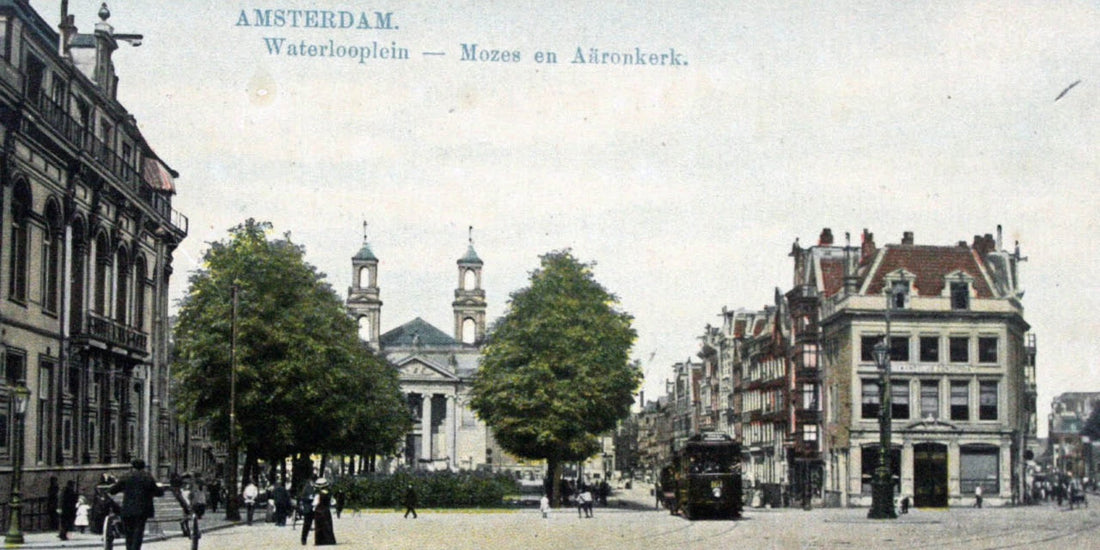
The Sephardic Jews in Amsterdam
Between exile and cosmopolitanism
A new home after centuries of displacement
In the 17th century, Amsterdam was a beacon of religious tolerance, economic dynamism, and intellectual freedom. This city became the new home for a community that had experienced centuries of persecution, expulsion, and forced conversion in Europe: the Sephardic Jews, descendants of those expelled from Spain (1492) and Portugal (1497). In Amsterdam, they found not only protection but also a platform for cultural, economic, and religious self-realization. They became a defining part of the city's history—as traders, philosophers, rabbis, and pioneers of an early modern global identity.
Return to Jewish Identity: The Portuguese-Israelite Community
The Sephardic Jews who settled in Amsterdam mostly called themselves "Portuguese Jews." Even though many originally came from Spain, they often sought refuge in Portugal after the expulsion in 1492—but were only able to live openly as Jews there for a short time before compulsory baptism was introduced there as well. Many of these so-called Marrano, or "New Christians," lived for decades in a precarious limbo: officially baptized, secretly Jewish, constantly threatened by the Inquisition. Only in Amsterdam were they able to openly return to their faith and rebuild their identity.
Here, they established their own community in the early 17th century. Numerous Sephardic families settled near what is now Waterlooplein. The community rapidly flourished and developed its own religious, social, and economic infrastructure. Perhaps the most significant expression of their self-confidence was the construction of the Portuguese-Israelite Synagogue of Amsterdam—the Esnoga—which was inaugurated in 1675. This monumental building, with its simple, classical style and constructed entirely of wood and brick, was one of the largest synagogues in Europe at the time. To this day, it operates without electric light—illuminated only by candles—and is considered a striking symbol of the pride and continuity of Sephardic tradition in the Diaspora.

Abraham Cohen Pimentel: A Rabbi between Authority and Awakening
At the heart of the community was a group of scholars who saw themselves as mediators between religious heritage and the modern world. One of them was Abraham Cohen Pimentel, who served as Chief Rabbi of the Portuguese-Spanish community of Amsterdam until his death in 1697. Pimentel belonged to a generation of rabbis who not only upheld halacha but also actively wrestled with the tensions between tradition and enlightenment, between authority and individual reason. He was involved in the famous excommunication of Baruch Spinoza, one of the most radical thinkers of the 17th century, who had turned away from central tenets of Jewish faith. Pimentel's participation in this excommunication demonstrates the rift within the community, which, on the one hand, enabled intellectual freedom but, on the other, sought to defend its religious boundaries.
Trading power in the Golden Age: The Sephardic economic elite
In addition to their religious organization and cultural independence, Sephardic Jews played a decisive role in shaping Amsterdam's economic life. As experienced traders, bankers, pharmacists, and diamond dealers, they commanded extensive networks that stretched from the Iberian Peninsula through North Africa to the Middle East and South America. Many of them had connections to the Spanish and Portuguese colonial territories and were able to quickly integrate themselves into the structures of Dutch overseas trade. Thus, Amsterdam became not only the spiritual home of Sephardic Judaism, but also a hub of an early modern globalized economy in which this minority played a disproportionately important role.
In close association with other Sephardic communities—for example, in Hamburg, London, Livorno, and Curaçao—they established a transnational network of Jewish presence that operated independently of state affiliation and was based on trust, kinship, and shared religious practice. These networks made them a kind of precursor to those "global minorities" characterized by cultural mobility, economic expertise, and loyalty to supranational values.
 Scholarship, education and enlightenment in Jewish Amsterdam
Scholarship, education and enlightenment in Jewish Amsterdam
In addition to economic and religious renewal, Amsterdam's Sephardic community also fostered an astonishing intellectual flourishing. With its schools, libraries, Hebrew printing presses, and publishing houses, it made a decisive contribution to modern Jewish culture. Scholars such as Menasseh ben Israel, a rabbi and diplomat, maintained contacts as far away as England and helped the Jews there return after their medieval expulsion. The intellectual climate that nurtured a thinker such as Spinoza also demonstrates how intensively this community engaged with the challenges and opportunities of modernity.

Amsterdam as the Sephardic center of Europe
The Sephardic Jews in Amsterdam created a new homeland for themselves, deeply rooted in religious tradition yet open to the world. They preserved their liturgical forms, their Portuguese language, and their cultural idiosyncrasies—while simultaneously becoming actors in a globally connected modernity. Rabbis like Abraham Cohen Pimentel embodied this tension between authority and awakening, between diaspora and self-determination. Their story is a striking chapter of Jewish resilience, adaptation, and creative power—and makes Amsterdam a place where the traces of Sephardic Jewishness can be rediscovered in fascinating ways.
In fall 2025, the JCOM will explore the music and culture of Sephardic Jews in the project THE KEYS OF TOLEDO. This project is funded by the Foundation for Remembrance, Responsibility and Future (EVZ) and the Federal Ministry of Finance (BMF) as part of the "National Socialist Injustice" educational program.
Current concert dates at www.jcom.de/konzerte .

